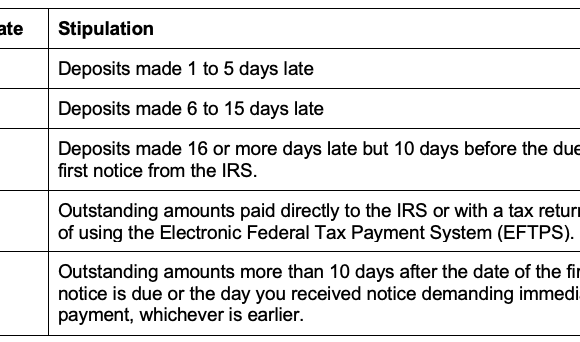9 options for paying your employees when you can’t make payroll

It stands to reason that, due to a coronavirus-related cash flow problem, companies of all sizes may lapse on payroll. So what should you do if you can’t make payroll? Read on for six options for paying your employees when you think you can’t make payroll—and three options should you miss payroll.
6 ways to increase cash flow when you can’t make payroll
1. Ask your vendors for longer payment terms.
Humans are the heart of any business. Explain your situation to your vendors as soon as possible. Be transparent and realistic about payment solutions and pay dates. If you’re a vendor, now is a great time to collect on any past due or outstanding accounts. Consider offering early payment discounts to encourage your buyers to pay as soon as possible.
2. Offer a discount to new customers who pre-pay for services.
Explain to your customers that pre-paying for services can help ensure the quality of the service in this challenging time. Your customers will appreciate both the positive discussion and financial benefit.
3. Speak to your accountant or bookkeeper.
Your accountant or bookkeeper knows your business’s financials inside and out. Speak to them as soon as possible and ask how you can make up losses or reallocate budgets to get workers paid on time.
4. Consider financing your invoices.
Invoice financing, also known as “invoice factoring,” is one resource in a business owner’s credit portfolio. Essentially, you can use your invoices as collateral for cash. Collect invoices immediately, rather than waiting 30, 60, or 90 days for your customers to pay you. But be prepared to pay a high-interest rate and ask your customers to sign a contract, agreeing to this solution.
5. Enable an overdraw on your bank account.
Your bank may allow you to overdraw on your account. But you may have to contact your bank to opt in, as you may be subject to heavy overdraft fees. This option may not be possible for retail banks that serve smaller customers.
6. Talk to your investors.
If you work with a venture fund, a board of advisors, or a network of angel investors, explain your situation. They may be able to provide a bridge loan or financing to help you through your crunch. Smart investors know that short-term challenges have the potential to come up.
3 things to do when there’s no way to avoid missing payroll
1. Talk to your payroll provider.
If you work with an outsourced payroll provider, for instance, communicate that your business is experiencing challenges due to lack of funds. Then speak to your health insurance carriers to guarantee that your employees will keep their coverage. Work with your network of partners to create a move-forward plan.
2. Apply for a short-term business loan or grant funding.
Keep in mind, however, that fundraising is a long-term process. And you may need to step back from your operations to recover from a decline. Other options include applying for an Economic Injury Disaster Loan. The Small Business Administration (SBA) offers these low interest loans to eligible small businesses and nonprofits that have been impacted by disaster-related hardship. Eligible business owners may apply for a loan through the Paycheck Protection Program (PPP). PPP loans may assist with payroll and other operational costs affected by the coronavirus.
Now might also be a good time to leverage a business line of credit. Unlike a traditional loan, you can access a line of credit as needed to mitigate losses in revenue. You only pay interest on credit when you access it. And your available credit replenishes as you pay.
3. Make up for the lapse in payroll at a later date.
If this is your last resort, speak to your workers as soon as possible. Be transparent about your losses, and understand that you may lose workers as a result. As soon as you can, make up lost pay and offer bonuses and other tangible forms of acknowledgment to thank your employees for their support.
Act fast—you can do this
All business owners can experience cash flow issues and late payroll. Whatever you do, don’t attempt to handle this tough situation alone. Some experts specialize in strategic financial services. Seek out these professionals to help you understand fines, penalties, and other repercussions. Depending on the health of your business, these numbers may be insignificant to your long-term financial trajectory. Act as soon as you realize the extent of your problem.
Given the large demand for additional authorized Paycheck Protection Program funds, not every qualified Paycheck Protection Program applicant will receive a loan. Loan and forgiveness calculations and eligibility may vary. Refer to the SBA.gov for information about your particular situation.
Regulations and guidance from the Small Business Administration and the U.S. Department of the Treasury on the PPP are evolving rapidly and the above information may be outdated. Please refer to the latest guidance from the Small Business Administration and the U.S. Department of the Treasury to confirm current program rules and how they apply to your particular situation.
We provide third-party links as a convenience and for informational purposes only. Intuit does not endorse or approve these products and services, or the opinions of these corporations or organizations or individuals. Intuit accepts no responsibility for the accuracy, legality, or content on these sites.
This content is for information purposes only and should not be considered legal, accounting or tax advice, or a substitute for obtaining such advice specific to your business. Additional information and exceptions may apply. Applicable laws may vary by state or locality. No assurance is given that the information is comprehensive in its coverage or that it is suitable in dealing with a customer’s particular situation. Intuit Inc. does not have any responsibility for updating or revising any information presented herein. Accordingly, the information provided should not be relied upon as a substitute for independent research. Intuit Inc. does not warrant that the material contained herein will continue to be accurate, nor that it is completely free of errors when published. Readers should verify statements before relying on them.
Editor’s note: This article was originally published on the QuickBooks Resource Center.
Published at Mon, 06 Jul 2020 21:09:06 +0000







